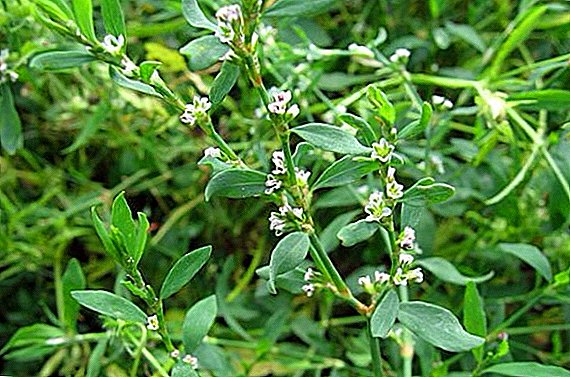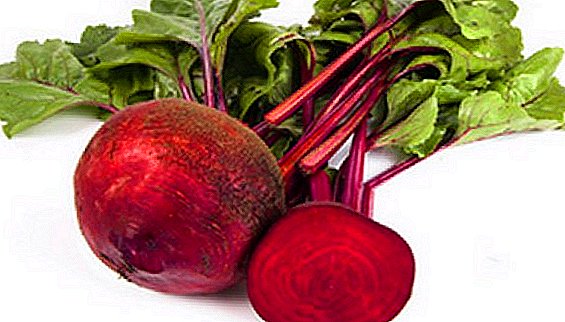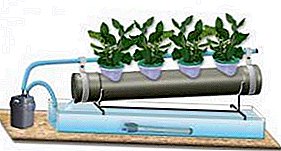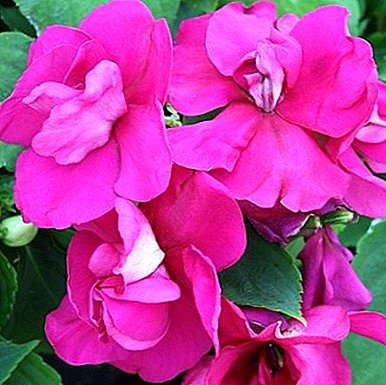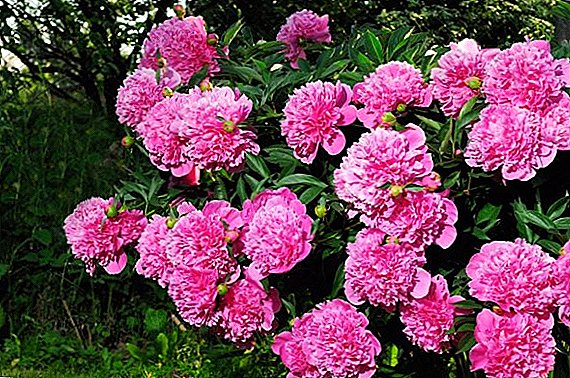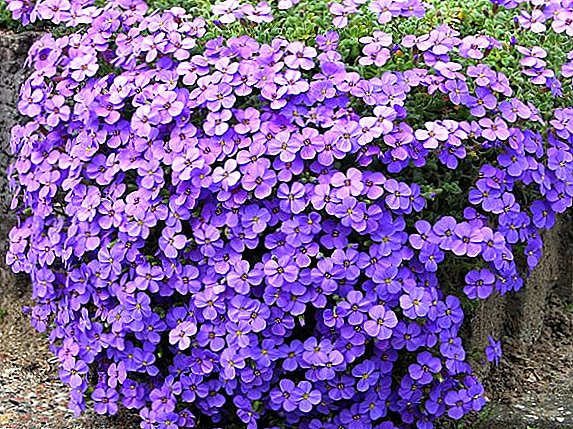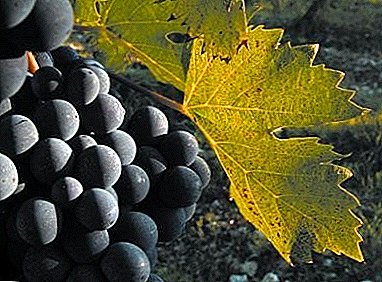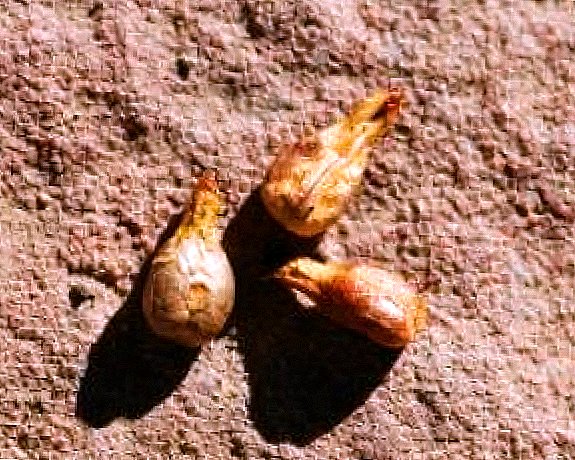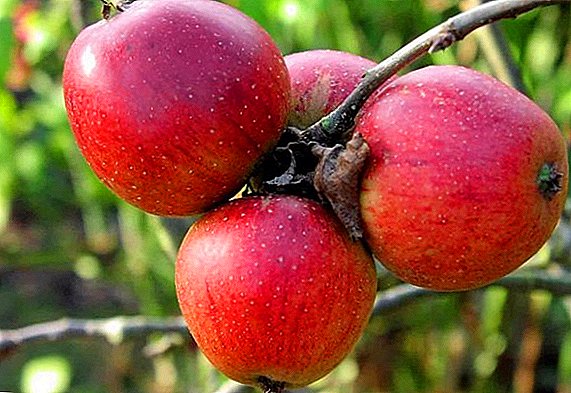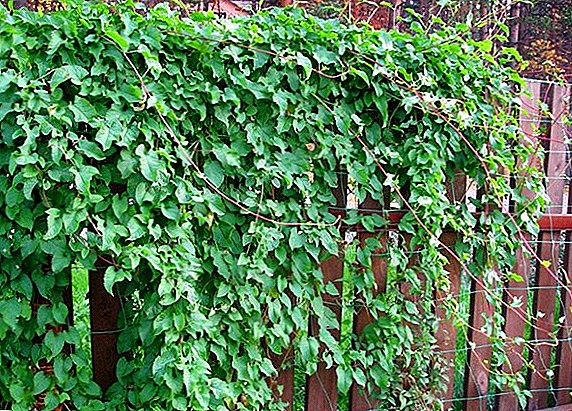 Recently in the design of the landscape are increasingly used tree lianas. These plants due to the climbing branches and dense foliage can be used for almost any purpose and design techniques. In this article we will discuss the tree-pliers, or red bubble, a plant that, besides beauty, can be dangerous.
Recently in the design of the landscape are increasingly used tree lianas. These plants due to the climbing branches and dense foliage can be used for almost any purpose and design techniques. In this article we will discuss the tree-pliers, or red bubble, a plant that, besides beauty, can be dangerous.
Description
Dislike of the plant caused him aggressive manner to develop: the vine clings to the trees in the way and destroys them, destroying the bark, which it clings to with thorns. Therefore, planting near fruit or ornamental trees is not recommended. The best place to grow will be a support in the form of a building wall or hedge.
Climbing plants give their special charm to the site, especially the campsis, climbing roses, girlish grapes, peas fragrant, ipomoea, Kobey, clematis, wistaria, cerododendrum.

The tree plow is a fast-growing creeper with climbing or straight shoots, leafed. Green shoots of lianas lignify over time, the bark on them changes color to gray-brown, can crack.
The stems rise along the support, twisting it in a spiral counterclockwise, the thickness of the stems is up to ten centimeters, the length is about half a meter. The foliage of the plant is painted in various shades of green: from bright lemon to dark marsh color. With the first frost foliage flies.
Wood pliers do not bloom immediately, at the age of five years. In June and July, the buds or panicles of inflorescences with a pleasant smell bloom, but not remarkable in appearance: greenish and small. Fruiting occurs at the beginning of autumn. The plant is literally strewn with red balls with yellow dry stipules on the background of more green foliage.
Popular varieties
In total, there are up to thirty species of wood pliers, but in our latitude three of them are popular.
Climbing tree

This climber is capable of climbing to a ten-meter height with the help of sharp hooks rounded in the shape of a sickle. The red-brown bark becomes brown and hard as it grows and matures.
Dense leaves in the form of an elongated circle up to eight centimeters in length, the edges of the plates with fine teeth, the tip is sharp. The color of the foliage is light green, by the autumn it takes on a rich yellow color, and in the middle of autumn, around October, flies.
Flowering climbing vine starts in July. In the axils of the leaves appear modest panicles of white with a yellow center of flowers, in a little over a week they fade away. In September, round-shaped fruits ripen, over time, yellow stipules open, revealing a red seed-box.
Brush plow

This variety grows to twelve meters in length. The plant has a gray-brown scaly bark and is not too thick compared with other types of foliage of green color. The leaf plates are veined, the shape is rather oval, the tip of the leaf is sharp, the length is 14 cm. In autumn the leaves turn yellow and fly around in the month of October.
The tree pliers are often used as a hedge. For this purpose also suitable the Bubbleplodnik, turn, hawthorn, privet, forsythia.
Towards the end of June, the tree pliers are blooming with inconspicuous whitish flowers, singly located in the leaf axils.
Round pliers

The most popular species in the culture, decorative, frost-resistant, represented by varieties:
- "Diana" - female form of the plant;
- "Hercules" - male form.
Important! Variety "Hercules" does not bear fruit at all and is completely safe for growing on playgrounds, as the plants are poisonous.The round-leaved vine grows rapidly (up to 18 meters in length), spreading out on any support and forming a wide and dense crown, in the absence of a support creeps along the ground. Strong shoots, originally greenish, eventually turn wood, acquiring a brownish tint and grooves on the bark. Shoots covered with small buds.
Leaves are round: from five to ten centimeters and in length and in width. The upper part of the plate is juicy, green and smooth, the lower one is slightly rough, of a gray shade. In autumn, the foliage becomes bright orange. The flowering period is in June, lasts up to two weeks. The greenish-white flowers are arranged in small inflorescences between the leaves. Red-orange fruits ripen in October.
Did you know? In the US, there is a real struggle of environmentalists against the dominance of the large-leaved tree pliers. The decorative look imported from China flooded large areas, displacing other plants and thereby disturbing the ecological balance.

Growing up
The tree plow is one of the most unpretentious plants that have no difficulty in planting or special requirements in care.
Landing
When choosing a place for creepers, consider the proximity of other cultivated plants: the tree-pliers can destroy them.
The place is better to choose sunny: this will ensure rapid growth and bright foliage. Best of all, the plant feels on loose, neutral soils with a good fertility index. It is necessary to fertilize the ground when digging before planting - for example, with humus.
Planting, as well as transplanting, is carried out with equal success in the spring or autumn period: April, September. When choosing seedlings, preference should be given to two and three year old bushes - they are best rooted.
Landing pit make a square type: 50x50x50. Spreading the roots, the plant is lowered into the pit, leaving the root neck closer to the surface. When planting multiple copies, the distance should be about one meter. After planting, the trunk circle is covered with mulch: peat or sawdust.
Breeding
For seed reproduction using their own or bought in special nurseries seeds. Sowing is carried out in April after the pre-cold stratification. Within two months, the seeds are in the refrigerator at a temperature of +2 to + 5 ° C. 
In the fall, sowing is carried out immediately after harvesting, without drying, only by removing seedlings. Sowing depth - no more than two centimeters. Sprinkling with soil, the seeds are not watered abundantly. The first shoots appear in May. Best liana propagated by green cuttings: Brushwood Pliers perfectly rooted without the use of stimulants.
Important! When cutting other species of tree-pliers, such as round-leaved, by cuttings, it is advisable to dunk the roots in Kornevine for sixteen hours.Rooted cuttings directly in open ground in a mixture of sand and peat, taken in equal parts. The cuttings are planted vertically, after two years the seedlings are moved along with a clod of soil to a permanent place.
Care
The blister bladder is resistant to drought, so watering is carried out regularly only on young specimens (three times a week), adult plants are content with precipitation. In strong heat, watering is carried out no more than three times per season. Simultaneously with irrigation, loosen the soil and remove weeds.
During the season, spend only three feeding:
- Spring and summer - complex mineral ("Universal").
- Closer to the fall - fertilized with a phosphate-potassium complex.

In the spring, before the buds wake up, they carry out sanitary pruning, clearing the plant from frozen, weak or broken branches. In the fall, pruning is necessary: the number of lateral branches that grow inwards or hinder the growth of stronger shoots decreases. When thinning the crown acquires a beautiful shape and well-groomed appearance.
In the winter, the tree trunk of the year-old plants is mulched, no further shelter is required. There are no special instructions for the control of pests or diseases, since the redbubble is distinguished by enviable immunity to both.
Application in landscape design
Liana can be used in different variations: it can decorate a gray stone fence, dilapidated building or the walls of the house. Planted near the support, it is well zoned space on the site.
The plant can be a spectacular decor for gazebos or terraces. Some species are used as ground cover, for example, for decoration of stone slopes or artificial reservoirs. 
A tree pliers can decorate not only the site, but also the house. The branch, cut with fruits, will serve as an excellent addition to a bouquet of late autumn flowers, the basis for creating dry compositions.


